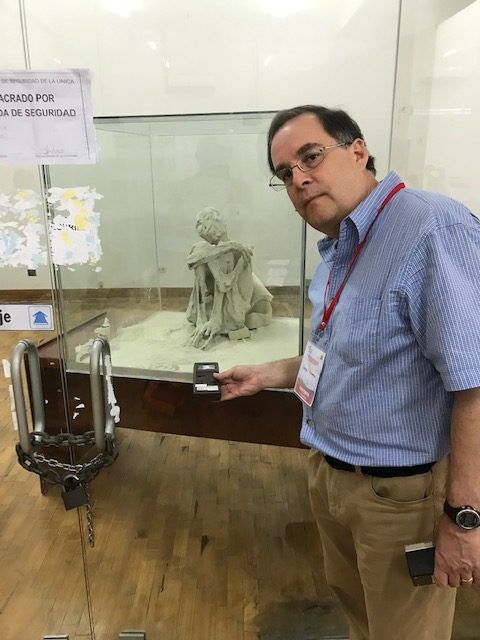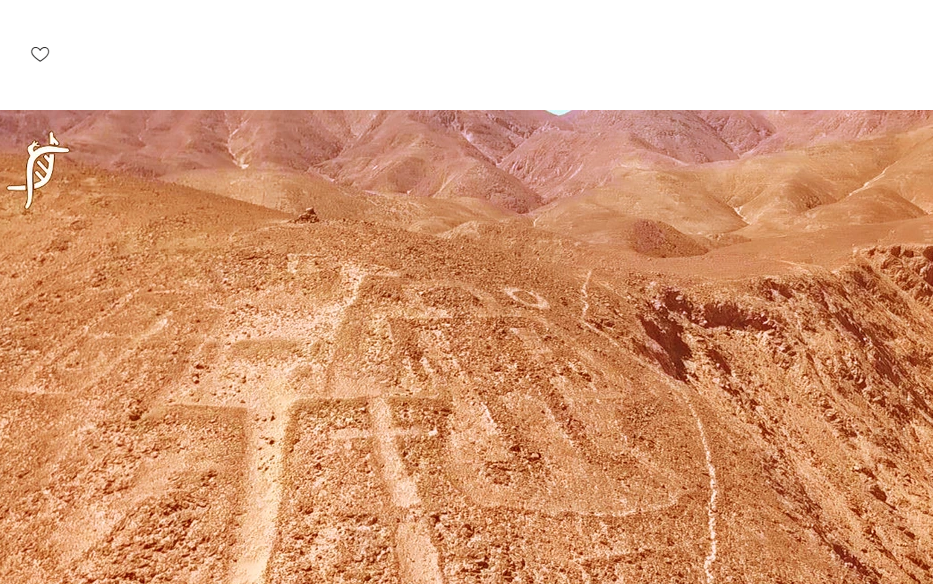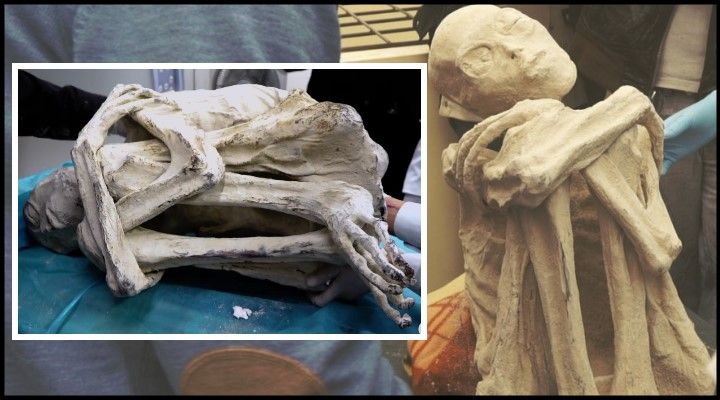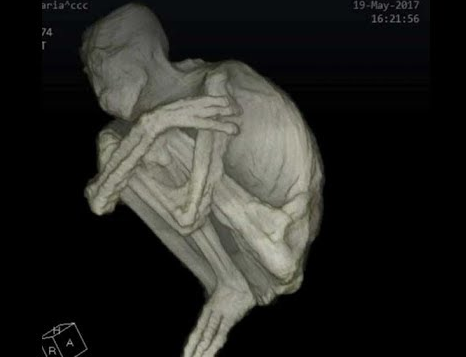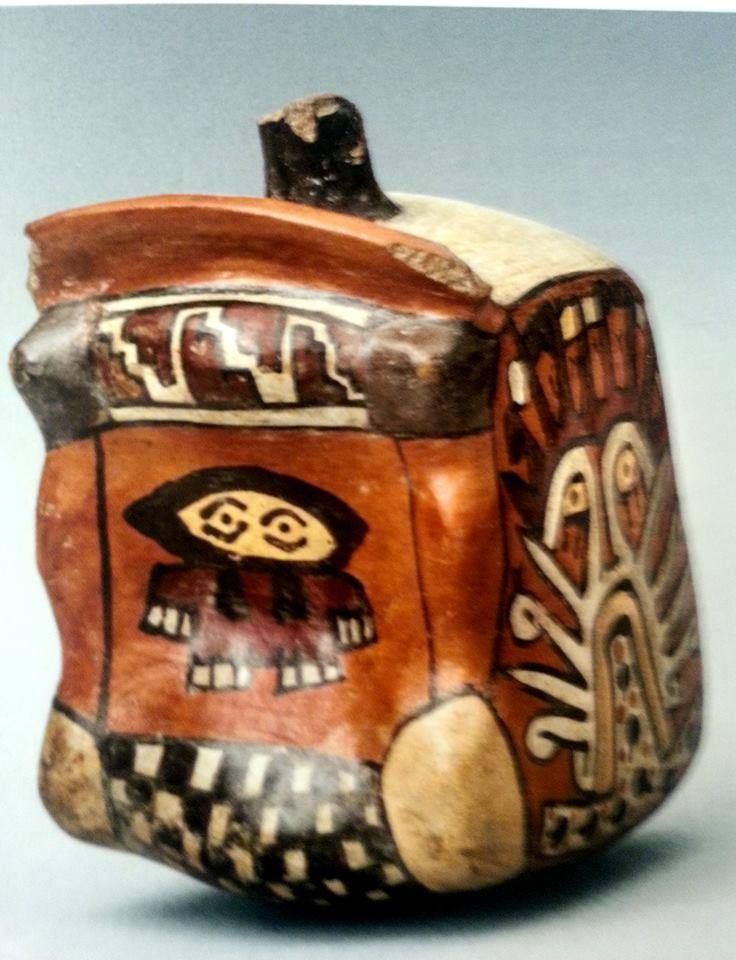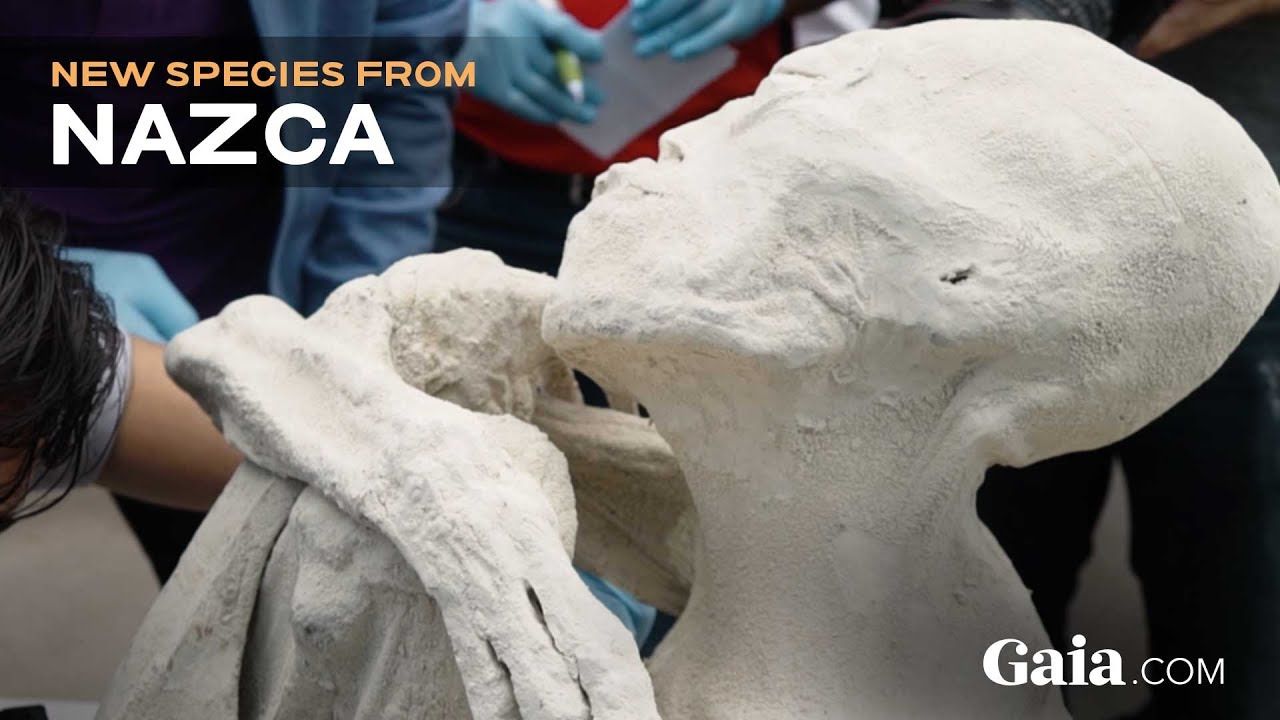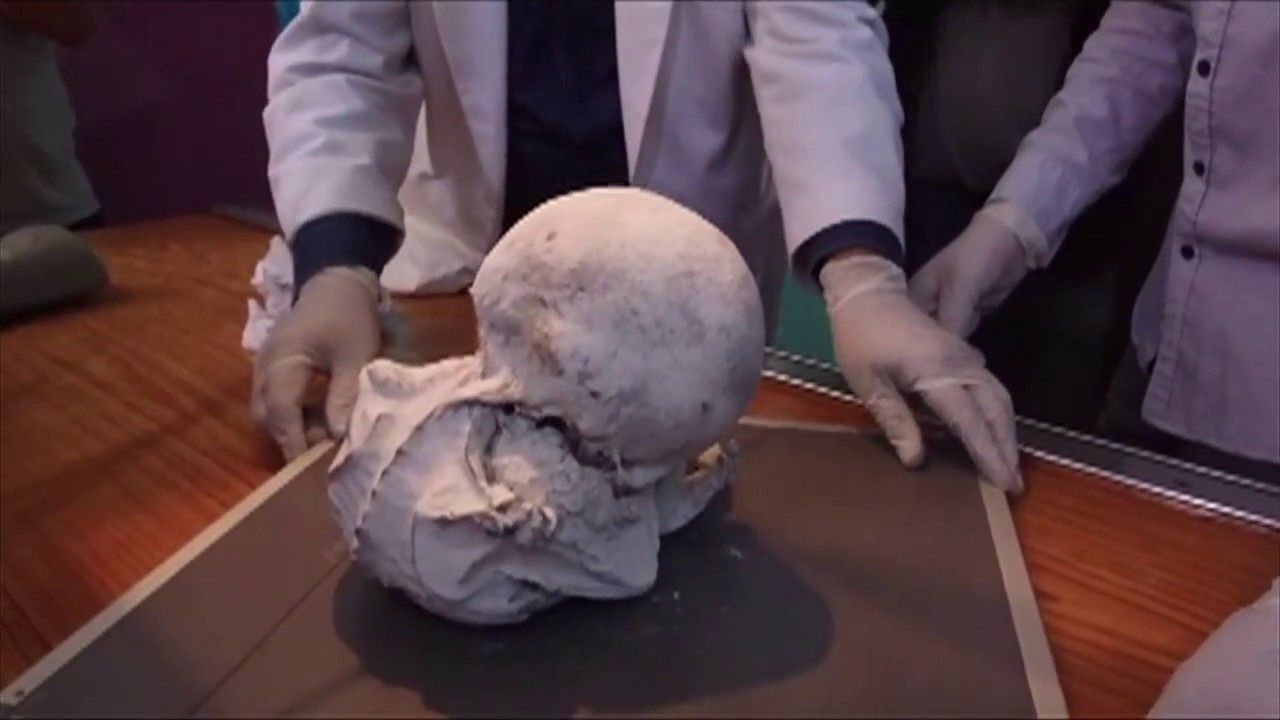INTRODUCTION
The question is: DO WE FINALLY HAVE SOME PHYSICAL EVIDENCE OF NON-HUMAN, INTELLIGENT ENTITIES? This would be exopolitically important and we should care.
For instance: There has been IN-DEPTH GENETIC SEQUENCING: BUT TO DATE (until January 2019) NO UNIVERSITY (AND ONLY VERY FEW SCIENTISTS) HAVE CARED TO GET INVOLVED IN WHAT MAY BE BIOLOGICAL/PHYSICAL EVIDENCE OF ENTITIES THUS FAR NOT MATCHING KNOWN EARTHLY SPECIES. Moreover, FEW IF ANY IN THE ENGLISH-SPEAKING UFO AND FEW EXOPOLITICAL or UFO COMMUNITIES HAVE COMMENTED OR CARED, WITH THE EXCEPTION OF SOME INDIVIDUALS LIKE CAPTAIN ROBERT SALAS. SEVERAL GENETIC LABORATORIES HAVE FOUND IMPORTANT DIFFERENCES AND ‘ANOMALIES’, EVEN AFTER NEXT GENERATION SEQUENCING (NGS) LIKE ABRAXAS: A REPORT FROM ABRAXAS IS FOUND IN THIS LINK Thanks to Instituto Inkari: https://www.the-alien-project.com/wp-content/uploads/2018/12/ABRAXAS-EN.pdf
Thus far (after about 2 years since the news broke out), the almost nil interest or involvement by academic circles, in general, is telling: ‘Scientific’ dogma, fear of reputation loss and prejudice (and not just the imposition of secrecy) overcome the scientific spirit of curiosity and play an important role against a substantial type of paradigm shift. The exopolitics community should care when physical evidence of a totally unknown humanoid species is coming together. If verified, these bodies may represent that humans (the Nazca) and humanoids of unknown origin lived in close proximity. Perhaps the possibility of some kind of a disclosure shift is not only in the hands of a major Government officially disclosing but also in the hands of a few caring, aware, motivated citizens. Perhaps (as Margaret Mead said) we should not doubt that only a small group of thoughtful, committed citizens can change the world.
Thus far, there has been little interest in the UFO, disclosure and exopolitics community in the developed West or even in Spain. Is it because people mostly care about cases they are used to and in their own language? And in Perú there has been little serious media coverage and lots of detractors trying to find every possible fault, publicly discrediting and laughing about it. But perhaps the sheer weight of evidence accumulated and the dedication of some individuals in favor that SOME of the samples may be genuine (besides a request from the Peruvian Congressperson (Armando Villanueva) for there to be an official investigation) could be reverting the apathy.
—————————————————————————————————————————————————–
I think that this situation on the so-called “THREE-FINGER, HUMANOID, DESICCATED NAZCA BODIES” is gradually becoming a seriously important revelation for humanity to reassess who we are, what life is, a possible extraterrestrial presence in Earth’s past, possible hybridization between homo sapiens and other species, etc. It also shows (thank goodness) that a few individuals care or are able to process the new possibility which is largely dismissed or ignored by scientific, media, political and other representatives of modern institutions.
But bone and tissue structure in these and many other images plus genetic tests performed by several labs are coming together to show that at least SOME of the many samples/specimens under research appear to belong to new species or to hybrid species previously unknown to science. I believe that taken together, this evidence overcomes some previous objections. If I mention some of the objections from skeptical scientists or scientists having a contrarian view it is because we need to engage in a civil dialogue and facilitate the exchange of views among interested scientists.
Could this case offer more evidence than ever before about similar alleged humanoids?
It is obvious to me that these DICOM, high-resolution, tomography images are genuine and, in the “María” body, the bones appear to be much more hollow, the teguments in hands and feet show continuity with bones that fit well. No cut of fingers. The rib cage is a little different. In “Josefina” the alleged eggs… are looking more like real eggs.
As of today, only radiologist Dr. Raymundo Salas Alfaro and Inkari Institute know the tomography lab. More should be revealed soon. Thanks to Dr. Alfaro’s efforts we now have these higher quality images and more specific descriptions. Allegedly, other labs that were approached were scared or worried in terms of their reputation and didn’t feel inclined to work with this research. I’m glad that (in spite of the legal consequences that the samples were illicitly obtained by a huaquero-grave robber) some persons and institutions are taking big risks in the name of humanity. I think it is a unique situation and should be treated as such. Many archaeological discoveries were made in an informal manner by huaqueros and others. I do not condone grave robbing to sell bodies or artifacts in the black market but it seems that the huaquero here nor only wanted to make money but to show a discovery for analysis for the world to know and that is why they first approached for guidance my friend Dante Rios Tambini who then took samples to Instituto Inkari.
We must recognize the contributions of radiologist Dr. Raymundo Salas Alfaro, biologist José de la C. Rios López, and analysis of forensic physician José de Jesús Zalce. I am glad that Jaime Maussan is working with these scientists. I’m told that the name of the clinic where the high-resolution tomographies took place should be revealed soon.
Below: A horizontal view of Maria showing very hollow bones. The tomographic bone density shows that the density is low because they are more hollow as biologist José de la Cruz Rios points out. If the bones are so hollow, could they still be strong due to a different chemical composition or structuring? We need more testing. Humanity needs to save and secure the bodies and study them with care.

Lateral right view of Maria. The fingertips have a similar ending as theropod dinosaurs. The calcaneus bone is different and the skulls’ brain capacity is larger than average (1650cc).

Posterior view – torso

Another posterior view-torso

Forensic physician José de Jesús Zalce observed in a recent interview that Maria has no scapula, cocxys or sacrum but I am told by biologist Ríos López that he made a human error confusing names and that he was referring to the specimen named “Josefina.” https://www.youtube.com/watch?v=wS1iAoxVdzY&t=275s
Maria’s spine lesion. Maria has her internal organs and is not a classical, regional “mummy.”


However, María was found in a classical Nazca mummy position.

Unique bone structure.

Detail of a subluxation of the jaw. No ear pavillions.

Detail of the spine with 12 pairs of ribs. Are they completely like ours?

DICON tomography images at 128 cuts of resolution shed new light.


In one foot, the middle finger broke off but the other fingers show continuity and no artificial alterations. The radius-carpus articulation is well articulated and gives origin to 5 phalanxes. The phalanges still possess their capsules in each inter articular line. The carpus has 8 bones. Another image (not available here) shows a cavity lesion in the right lung.

Another view of Maria’s right hand

Finger connectivity.

Detail from hands

What are these skin protuberances?

Previous photo of Maria’s horizontal fingerprints.


To be fair, I need to show this previous X-ray plaque by which other scientists determined that proximal phalanxes had been added to the feet. Issues like these need to be decided after careful scrutiny.

A more recent image with a broken finger

One of María’s feet with a hook-like ending 8.6 inches. They have 5 phalanxes.

María’s 5 phalanxes in the feet

Details of extremely hollow bones and feet similar to Therapods as pointed out by biologist José de la Cruz Rios López.


In Maria’s feet, the Achilles Heal is inserted in the Astragalus bone rather than in the calcaneus bone.

Maria’s rib cage: It appears to be somewhat different. Is she a hybrid?

The body named “Josefina” (approx 23 inches tall) allegedly has a metal piece contoured around his chest. It has been affirmed by the Maussan team that the metal was analyzed in INGEMMET (the Metallurgic, Mining and Geologic Institute of Peru) in Peru with anomalous results to be revealed soon. Hand and arm mobility was probably restricted due to the fact that Alberto only shows one large bone in the forearm. No fibula, cubit, radius, tibia. He would have walked like an oviparous entity. The pelvis would be made of separate bones built in a circular manner. (biologist José de la C. Rios López).

An upper, frontal view of “Josefina.” 8 specimens like this have been analyzed. Apparently, she had a broken clavicle. The alleged implant or, perhaps, the prosthesis has a HU (density) of 5,241.52. In other images, it is shown that The viscerocranium has no sutures, that the cranium has 3 fenestras and a pneumatization in the occipital area. The Magnus foramen is square. The clavicle is fused or is a furcula as in birds and some dinosaurs. A short mouth/snout aperture adapted to feeding by sucking liquids. According to biologist José de la C. Rios López the skin is scaly, the neck could be retractile. Victoria and Alberto are defined as “humanoid reptiles” by biologist José de la C. Rios López.

The hands of the 60cm beings still show articular capsules, tendons, ligaments. They only have 4 phalanges instead of 5 as Maria.

“Josefina” (also approximately 23 inches tall) is apparently pregnant with eggs. They are translucid and seem to show structure (embryos?) inside and (although probably calcified with a 2,470.91 HU density) may not be placed metal objects as alleged by skeptical scientists. The cranial perimeter is large and would not be that of a pre-Hispanic dog as alleged. “He” has a different number of fenestra and a very light head.
The spinal column of this second species of 60 cm in height is medial (located in the middle rather than further back). This is why the posterior apophysis is longer than what was known before. This is why there are some structures of unknown function in an area posterior to the spine. They might have to do with swallowing. (José de Jesus Salce, forensic physician).
Interestingly, reporter Jois Mantilla and José de la C. Ríos López pointed out to me that an ENERGY EMANATION seems to come out of this specimen “Josefina” with the tomography. It is in the coming out from the metallic piece place on the upper chest. I don’t know but it might not be an “artifact” of the tomography. It would be necessary to know under what frequencies this energy emanation becomes visible. Here it looks like a reddish flame.
Forensic Archaeologist Flavio Estrada who worked in forensic cases for the Public Ministry in Perú has necessary opinions that must be listened to. He stated that it is the energy of the tomographic machine hitting against the metallic body. In the same manner, Mr. Leopoldo Zambrano Enríquez commented that by using the original tomographies sent to France with 5Gb of information, and using DICOM visors what we are seeing is something that in radiology is known as an artifact “in solar rays” produced by the dispersion of X rays upon hitting the metallic plate. I think that these comments need to be included in a respectful way in order to be fair. However, more tests should be carefully conducted. The artifact known as “solar rays” seems to be different because the “rays” are dark, straight and come together concentrically.
Alleged energy emanation detected.

Another version of the alleged energy emanation detected.

Three more images of the alleged energy emanation. Thanks to Peruvian reporter Jois Mantilla who has been promoting the preservation and formal study of these specimens in spite of great dismissal and opposition.



A frontal image in red color above the metallic object. The apparent energy emanation would be in a deep red color above the metallic piece.
The actual “solar ray” effect or artifact looks different. Here seen also in Josefina: converging, straight, dark lines (“rays”).

A frontal view. The alleged point of energy emanation on the middle of the metallic piece looks darker.

Another view of “Josefina” with the metal piece placed on the chest below what appears to be a one-piece furcula instead of a collarbone.

A tomographic measurement of the density of “Josefina’s” eggs

Another view of the eggs inside “Josefina” at a density of less than the maximum for bones.

Possible internal structures in the eggs. Possible embrionic formation? Inkari Institute – Courtesy of biologist José de la C. Rios López

Possible internal structures in the eggs. Possible embrionic formation? Courtesy of biologist José de la C. Rios López

A recent image of structures within the alleged eggs. They could be OVOVIVIPAROUS creatures. Shared on 01-27-2019. Ovoviviparous creatures gestate inside eggs in the parent’s body and may hatch inside before coming out.

According to biologist Jose de la C Rios López the bones are not cut as we can see with the high-resolution tomography. They are “crowned” and only in lesser resolution images seem to have been cut because they are more hollow than normal.

The crowned epiphysis of “Josefina” between the humerus and femur. Is it a different type of jagged connection?

From a study made with associated Russian scientists, the “knee” doesn’t show to be fabricated with cut bones.

The Histology (an analysis of the skin cells) of a small, headless specimen named “Victoria” was made by biologist Jose de la C. Rios Pérez. Here in Spanish, French and English. Here is the link published in “Alien Project”: https://www.the-alien-project.com/wp-content/uploads/2018/11/Victoria-Histologie.pdf

From the conclusions section: – The Victoria paratype skin is composed of a highly keratinized,
acellular and thick flat stratified epithelium similar to the
scales of reptiles, for both the scapular and hip regions.
– The skin of the scapular region presents small, very thick,
white protuberances, whose appearance is like a wart. Its
distribution in the skin is solitary and also in pairs, but missing
on the hip sample.
– In the protuberance, the keratin becomes more compact and
acquires an amorphous form.
– Mucous glands are missing just like the sweat glands. The loss of
water through the skin is therefore nonexistent (the keratin keeps
it hydrated and protected), which allows it to live in very dry places.
As in the Nazca desert, where these bodies were found covered
with diatomaceous earth for their preservation
Remember that one of the specimens was of an infant named “Wawita”?

With the better images, Wawita’s hand was shown by Dr. Salas Alfaro to have been mutilated. He thinks that, since the specimen is in a very brittle condition, this alteration could have been done as a ritual in the pre-Hispanic past for some unknown reason.

Wawita’s feet also mutilated, modified.

However, we must also recognize that other scientists (for instance pharmaceutical chemist Dr. Ernesto Ávalos using infrared spectroscopy) have legitimately found that some specimens have been fabricated with modern materials such as palmitic acid (oil), paraffin (wax). In smaller quantity: glue, polyethylene vinyl acetate (plastic), cyanoacrylate. All modern components. These would not be the best or genuine specimens.
However, there appears to be a clear difference between different kinds of samples as follows analyzed. Some of the hoaxed ones (including fake hands) may have been analyzed together with previous images (with less detail) by the team from the Instituto de Medicina Legal de Ciencias Forenses del Ministerio Público (The Public Ministry’s Institute of Forensic Sciences and Legal Medicine). Thus (while naturally inclined towards skepticism by being outmaneuvered by huaqueros and by knowing that there is a large black market in Peru for genuine AND FAKE pre-Hispanic items), they would have sincerely concluded that the entire group of specimens given to them (and any other items considered to be part of the same group of specimens) is fake. I’ve interacted with BOTH group of scientists and think that both are sincere. Thus far they haven’t met with each other! There is suspicion between them! It is high time for these 2 groups of scientists to meet in a cordial manner and objectively clarify each little point of disagreement in a meticulous manner.

Regarding some of the GENETIC TESTS: Several laboratories found anomalies in the genetic profile of some samples: For the specimens named “Maria” and “Victoria” out of the main group of specimens most likely not faked (Maria, Wawita, Alberto, Josefina and Victoria- the headless specimen).
NEXT GENERATION SEQUENCING (NGS) LIKE ABRAXAS: A REPORT FROM ABRAXAS IS FOUND IN THIS LINK: https://www.the-alien-project.com/wp-content/uploads/2018/12/ABRAXAS-EN.pdf
A study commanded by the Incari Institute: Massive sequencing of a bone of Maria: Using the services of Dr. Sarah Kouhou, PhD. Only 33.675% corresponds to the human genome. 18.415% to bacteria. Virus and others in 9,384 readings.
A study commanded by Third Millennium using the services of BIOTECMOL. For the tridactyle specimen “Victoria” (the one without a head) – out of a Bone (with 2,400,000 base pairs), using last generation sequencing, only an alignment of 19.82% corresponds to Human DNA. And for “Maria,” only corresponds to an alignment of 34.935% with the human genome.
So according to these labs, for the 60cm tridactyles (to which “Victoria” belongs) and for “Maria,” there is no correspondence with homo sapiens and with what is known of terrestrial organisms in the Blast Base. More in-depth genetic tests need to be conducted for “María” but for the 60cm specimens they have already been conducted.
And the University of St. Petersburg did an exon analysis for a massive nuclear DNA sequencing and for Maria it found a correspondence of 23.8% of short fragments attenuated with the human genome.
Chart presented in the presentation room inside Peruvian Congress. Percentage of genome coincidence of Maria with homo sapiens (after massive DNA sequencing) according to 3 laboratories.
An important link to consider is: https://www.the-alien-project.com/wp-content/uploads/2018/11/2018-02-06-PALEO-DNA-MARIA-COMPARAISON-ADN.pdf
OBSERVATIONS BY BIOLOGIST JOSÉ DE LA CRUZ RÍOS LÓPEZ:
The bones of the most important samples (Josefina, Victoria, Alberto, and María) do not correspond to animals or even to human bones since these bones are hollow bones and this does not correspond to any mammalian animal of the earth. María presents this characteristic of hollow bones without the presence of tracts.
The eggs are less dense than the metal and less dense than the maximum density for the bones.
In the metal in Josefina’s chest, the values as metal are high. They are exact data of the tomographic equipment. There is no manipulation here. We have a reference between those eggs and the metal. The bones are less dense because they are hollow.
Both the x-rays and the evidence of the particularities of the bones coincide. The bones do not belong to any terrestrial mammal because of the said bones of fabricated animals.
Why Josefina’s bones and other specimens have furcula. Why do they have hollow bones? Why do they have a structure of a sexual organ? Why do eggs have conglomerate material if they are metal?
Why does Victoria’s histology show keratinized skin similar to reptile scales?
Why metals correspond in their preparation to pre-Columbian times? Why does carbon 14 in hands date 7000 years in Beta Analytic laboratories and laboratories in Brazil?
Where is it if Analysis of c14 to say that it is a MODERN armed?
Why does the head have 3 fenestrae in the posterior part of the eye socket if the species on the earth only have 2? No species of the earth has three openings behind the eye orbit as it has this being, which, through the tomography could be checked for its presence.
Why are there vascular nerve bundles if they are just bones of various armed animals?
The viscerocranium is composed of two types of tissues. 1. Bone tissue and soft tissue. Hence the lightness that it shows and we should add that fenestra orifices have pneumatizations. In addition, the bones that compose it are very thin sheets.
The weight of these heads (which were two loose) gave an average of 0.377 grams. Which is matches a big brain because the lightness of the head is compensated with the macrocephalic size of the encephalic mass.
The skull has a small short snout.
Why is the viscerocranium composed of two types of soft and bony tissues if it is supposed to be a dog’s skull?
Why do the extremities such as the femur and humerus have crowned edges and present the humeral head or epiphysis if they are only cut bones as they say?
Why are ribs ringed?
Why does the vascular bundle come together between the vertebrae of the thoracic waist?
Why does the vertebral column show compression of the vertebrae as a lesion?
Why was it buried in diatomaceous earth are they dried and in a perfect state of preservation?
Why does he have a hand in pronation? Why three fingers?
About a writing with which he challenged Salas Gismondi Why do they have a cranial perimeter different from other species of terrestrial mammals?
If you had in your hands the skulls show the carving that was done on them. It is not difficult to prove it. A carved bone leaves traces. And they have not shown it.
Why are there 2 sutures in the foramen magnum square?
And why are there 2 sutures in the skull of these beings that are not in the dog?
Where are the cuts and filings that they proclaim? Why if the skin is vegetable-based, the HISTOLOGY shows something else?
The left humerus of Josefina Reptil Humanoid, which they have indicated as cut and is the only argument they use to discredit these bodies as false, is not cut since it has the lower humeral head or epiphysis and its edges are crowned as it has pointed out the independent study conducted by the University of St. Petersburg Russia.
————————————————– —————————————————-
QUESTIONS REGARDING THE SPECIMEN “María”:
Are the first phalanges of the hands are placed as phalanges of the feet?
José de la C Ríos replies: That is a presupposition because in reality the phalanges present their interdigital capsules.
Then, José de la C Ríos asks: Why did they call ‘modern fabrication’ a sample that Krawix (Paul Ronceros, according to interview) declares that he warned the forensic of the prosecution office not to analyze the part glued together … which he claims he had to glue because it had been broken?
Other observations: Why the mummy does not have the calcaneus bone like homo sapiens?
Why is the Achilles heel fixed in the Astragalus bone and not in the calcaneus?
Why does the mummy Maria have 3 phalanges in a set of bones of varying size and is at a 90-degree angle?
Why does each finger end in semicircular pads of approximately 1.5 cm with horizontal fingerprint lines?
The vertebrae from the spine located in the middle of the torso seem to be extremely hollow.

The skulls show a great degree of pneumatization or more cavities than those found in South American camelids like the alpaca, llama, guanaco and vicuña. The seem to be extremely light. Do they match a known species?

——————————————————————————————————–
GOOD NEWS: Some Professors from Universidad Nacional San Luis Gonzaga (mostly related to the natural sciences), among them engineers, physicists, physicians became interested in working to find out the truth. They were visited by Jaime Maussan and by an Instituto Inkari representative and saw some of the evidence. The university is located in the City of Ica, a few hours south of Lima by car and not too far from the alleged site of the findings in Nazca and/or Palpa. I drove to the City of Ica on Sunday the 27th and met them in person on Monday the 28th, 2019. I spoke with them and with the Vice-rector for research and sent them the information I had gathered telling them that I am willing to collaborate.
About a week later, archaeology students from that university wrote a statement rejecting the Professors initiative. The response may be because they follow a research pattern that requires first locating the exact place of artifacts or biological remains, including its historic, archeological context while natural scientists feel more comfortable with being able to analyze physical-biological samples.
CONCLUSION
Taken all together, the situation is crucially changing in favor of the reality that SOME of the 3-finger samples from the Nazca-Palpa area in Perú are genuine. Needless to say, this would be a very important discovery and part of different increasing types of evidence leading toward a form of disclosure revealing that other intelligent and/or humanoid life forms previously unknown to science have interacted for quite some time on Earth with humanity.
Consider the political, exopolitical and cultural consequences!
P.S.:
Note of clarification (11-08-2018): I think that many or all of the high-resolution tomography images are interpolated from 16 cuts to 128 cuts but not manipulated to show something different. Since the discussion was about “high-resolution” images, I had not noticed the word “interpolated” in the Alien Project site. I had also been told by a researcher into the case (of the team in favor) that there may also be another clinic that was used for original high-resolution images at 128 cuts but this is to be confirmed. Experts in tomography please comment.
An important link that has to be considered as per the favorable scientific analysis regarding images, some genetic tests, and other issues is in Inkari Institute’s “Alien Project”:
https://www.the-alien-project.com/en/results-analyzes-mummies-nazca/
A NOTE ON THE GENETIC FINDINGS (updated for March 2019)
The complete genome sequencing of one of the smaller, 3 -finger, humanoid specimens found in the NAZCA-PALPA region of Perú was made using the following equipment: HiSeqX10.
Using a protocol for extracting ancient DNA and for amplifying it using Multiple Displacement Amplification. This particular study was made by CEN4GEN Institute for genomics and Molecular Diagnostics ( a Canadian Corporation).
The extraction of ancestral DNA was successful for 2 samples of the specimen that has been called “Victoria.” The sequencing generated more than 1000 million DNA fragments. The biological information analysis of the data was made with software designed and published by institutes like The New York Genome Center and the JGI of the U.S. Department of Energy. It required more than 500 hours of processing time conducted by Abraxas Biosystems.
Some of the more relevant findings are the following:
A portion of the DNA had similarities with human beings because the poorly protected samples had been exposed to the environment and to different persons. But…
1) The portion of the DNA that was similar to that of human beings was much smaller (14.29% and 15.26%) in contrast to the portion that was not similar to human beings.
2) There is approximately 54% and 76% of the DNA readings for samples 0002 and 0004, respectively, do not have a significant similarity (under the bioinformatic taxonomic classification of Abraxas Biosystems) with ANY of more than 1 million species or more than 41 million sequences that have been registered in genomic databases and DNA databases called “nt” and “refseq” of the NCBI which is the more complete public data base used by the scientific community.
The 1 Terabyte of data is being uploaded to an open-source page where other scientists can study it. They may need a supercomputer.
SIDEO NOTE:
There has been controversy regarding who found the specimens and under what circumstances, including the lack of a clearly known archeological context. This has been used to dismiss the entire case or to object to further studies. In fact, I have been called “stupid” and crazy” by name and surname in the airwaves (radio and cable TV) for stating an opinion. This is called DEFAMATION. The opinion which I still sustain is that since we have physical, biological specimens at hand, we need to focus on them more than on the dubious information about who found them, their exact archaeological, cultural and geological context and whether they are being negotiated or not. While the latter issues are important (and more information should be found about them), the former issue (the PHYSICAL EVIDENCE that CAN BE ANALYZED) is more DETERMINING.
If (after all is said and done) scientists show that at least some of the samples have not been artificially assembled and that their genes do not match any biological specimens on Earth, the controversy about who found them and under what circumstances or whether he or she wants to sell them, or even that an ideal, standard scientific procedure was not followed, will not change the main findings.
I’m not a specialist in mummies but as an educated, concerned citizen, I value the fact that verifying the specimens can be of great consequence culturally, politically and exopolitically. This is why I try to offer information about it attempting to be as objective as possible.
